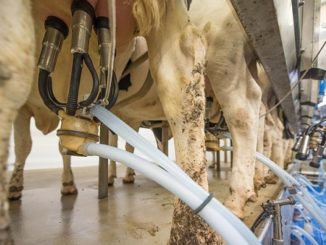The change in global climate drastically influences the production parameters of the livestock and one should understand the effect of enhanced temperature on animal physiology. It facilitates better understanding of the thermo-adaptability of animals in hot as well as cold environment. The homeostatic mechanism of warm-blooded animals maintains the body temperature balancing the heat production and heat loss mechanism efficiently. The animal moves out of the thermo-comfort zone, it needs energy to cop-up with the adverse situation. The various factors that affects the thermo-adaptability are genetic, environmental and managerial conditions. Three factors are complementary to each other. The production of high yielding animal in the adverse environment may come down.
Heat stress and physiology
Heat stress has effects on physiological variables like rectal temperature, respiration rate, feed and water intake of animals. It changes the serum biochemical constituents like electrolytes, enzymes, antioxidants concentration. Also, heat stress causes alterations in endocrine parameters like cortisol, T3, T4 levels. With that, heat shock proteins (HSPs) expression varies with thermal stress and, it plays a major role in the thermo-adaptive mechanism of animal livestock.

The various mechanisms of livestock to defend heat stress are behavioral, neuro-endocrine, cellular and molecular, physiological, metabolic, blood and biochemical ones. The general physiological mechanisms during heat stress are increased respiration rate, profuse sweating, decreased feed intake etc. The endocrinological parameters like serum level of thyroid hormones (T3, T4) decreases as ambient temperature increases resulting decreased basal metabolic rate in higher temperature. The increased secretion of cortisol is the primary change in the acute thermal stress. It reduces later on during chronic thermal stress. The initial spike in the cortisol may be due to the activation of ACTH during acute heat stress and later decline may be due to activation of negative feedback mechanism of glucocorticoids.
The serum biochemical parameters like AST, ALT and ALP increases as the ambient temperature increases. This positive correlation may be due the hepatic cellular damage and release of the enzymes into the blood. The other explanation is the reorganization of energy balance by animal to cop up with the changing temperature. The serum monovalent electrolytes like sodium, potassium and chloride decreases as ambient temperature goes up. It shows the inefficiency of the regulation of the monovalent electrolytes during higher temperatures.
The oxidative damage in higher ambient temperature is comparatively high and it is due to the production of the free radicals which destabilizes the plasma membranes resulting cell death. As temperature rises the antioxidant like superoxide dismutase (SOD) and total antioxidant capacity (TAC) increases to defend the increased free radicals in the serum. It is one of the core adaptive strategy to phase thermal stress. The heat shock proteins expression in higher temperature is well studied. HSPs are molecular chaperones and HSP70 is the most temperature sensitive and its expression is increases as the temperature goes up. So, it uses as the marker for the heat stress. The increased HSP70 expression aids to stabilizes many proteins and their transport across plasma membrane. Similarly, the HSP90 is also a significant molecular chaperon which prevents protein degrading in cells and it also increase as the temperature rises.
Conclusion
The selection and breeding of better thermo-adaptable indigenous animals are the solution to phase high ambient temperature. In the changing climate scenario, high incidence of the heat waves, the thermo-adaptability of all tropical farm animal should be well documented and the understanding of adaptive mechanism should be the first step in the selection and breeding of good livestock.
References on demand
How useful was this post?
Click on a star to review this post!
Average Rating 4.6 ⭐ (27 Review)
No review so far! Be the first to review this post.
We are sorry that this post was not useful for you !
Let us improve this post !
Tell us how we can improve this post?
Authors
-

Physiology and Climatology Division, IVRI, Izzatnagar, Bareilly
Recent Posts -

Physiology and Climatology Division, IVRI, Izzatnagar, Bareilly
Recent Posts -

LPM Section, IVRI, Izzatnagar, Bareilly
-

Physiology and Climatology Division, IVRI, Izzatnagar, Bareilly
Recent Posts -

Pharmacology & Toxicology Division, IVRI, Izzatnagar, Bareilly
Recent Posts -

Division of Poultry Science, IVRI, Izzatnagar, Bareilly
Recent Posts





3 Trackbacks / Pingbacks